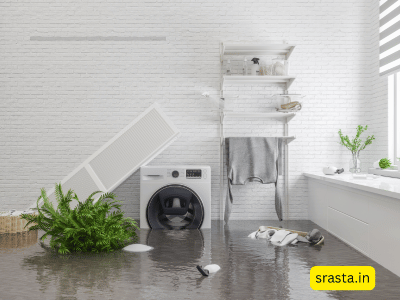Most Common Causes of Blockages in Pipes

Pipe blockages are a common household and commercial plumbing issue that can cause serious inconvenience and even structural damage if not addressed promptly. While the symptoms—slow drains, foul odors, gurgling sounds—are relatively easy to spot, the causes of blocked pipes can vary significantly depending on the location, type of property, and maintenance practices. Understanding the root causes of these blockages can help prevent them and maintain the health of your plumbing system.
In this article, we’ll explore the most common causes of blockages in pipes, how to identify them, and some tips for prevention.
1. Hair Buildup
One of the leading causes of bathroom pipe blockages is hair. Hair strands tend to bind with grease, soap, and other sticky substances inside the pipes, creating stubborn clogs over time. These are especially common in shower and bathroom sink drains.
How to Prevent:
-
Use hair catchers or drain screens in the shower and bathroom sinks.
-
Regularly remove trapped hair before it goes down the drain.
-
Flush drains occasionally with hot water or natural cleaners like baking soda and vinegar.
2. Grease and Fat
Grease, fat, and oil are major culprits when it comes to kitchen sink blockages. When poured down the drain, hot grease may seem harmless, but it cools and solidifies inside the pipes, narrowing them and eventually leading to a full blockage.
How to Prevent:
-
Never pour grease or oil down the sink.
-
Collect grease in a container and dispose of it with solid waste.
-
Use strainers to catch food particles before they enter the drain.
3. Food Waste
Even with a garbage disposal, some food items should never go down the drain. Foods like coffee grounds, eggshells, pasta, rice, and fibrous vegetables (e.g., celery or potato peels) do not break down easily and can accumulate in pipes.
How to Prevent:
-
Scrape plates into the trash before rinsing.
-
Use a compost bin for food scraps.
-
Avoid using the garbage disposal for items known to cause clogs.
4. Soap Scum
Soap may seem harmless, but it can contribute to blockages—especially when combined with hard water. Soap residue, or soap scum, can accumulate on pipe walls and trap other debris, eventually leading to slow drains or full clogs.
How to Prevent:
-
Use soap-free or liquid-based cleaners instead of traditional soap bars.
-
Install a water softener if you have hard water.
-
Regularly clean your drains using natural or enzyme-based cleaners.
5. Toilet Paper and Non-Flushable Items
Using excessive amounts of toilet paper or flushing non-flushable items such as wet wipes, sanitary products, diapers, or cotton swabs can lead to serious blockages in your toilet and sewer lines.
How to Prevent:
-
Use toilet paper sparingly.
-
Dispose of non-flushable items in the trash, not the toilet.
-
Post reminders in shared bathrooms to prevent misuse.
6. Tree Roots
In outdoor plumbing, one of the most severe causes of blockages is tree root intrusion. Roots can grow into sewer lines through small cracks or joints, gradually expanding and completely obstructing the flow of water and waste.
How to Prevent:
-
Regularly inspect sewer lines, especially if there are large trees nearby.
-
Use root-killing chemicals as preventive maintenance.
-
Consult a professional plumber for annual pipe inspections using cameras.
7. Mineral Buildup
In areas with hard water, minerals such as calcium and magnesium can accumulate inside pipes, narrowing the passage and eventually causing blockages. Over time, mineral deposits harden into scale, which is very difficult to remove without professional help.
How to Prevent:
-
Install a water softener to reduce mineral buildup.
-
Flush pipes regularly with a descaling solution.
-
Have a plumber perform regular pipe maintenance.
8. Small Objects
Sometimes, objects accidentally fall into drains—jewelry, toothpaste caps, toys, or other small items—which can become lodged in the pipe and cause a blockage. These are especially problematic because they can be hard to locate and retrieve.
How to Prevent:
-
Use sink and tub strainers.
-
Avoid keeping small objects near the edges of sinks or tubs.
-
Educate children about not putting toys or objects down drains.
9. Collapsed or Damaged Pipes
Older plumbing systems may suffer from structural damage such as collapsed, cracked, or misaligned pipes. These issues can prevent normal flow and create recurring blockages that are not resolved with simple drain cleaning.
How to Prevent:
-
Schedule professional inspections, especially in older homes.
-
Replace old or corroded pipes before major issues arise.
-
Pay attention to recurring blockages—they may be a sign of pipe damage.
10. Improper Pipe Installation
If the plumbing system was poorly installed or modified without professional oversight, it could result in problems like misaligned pipes or inadequate slope for drainage. These flaws can cause slow drainage and frequent blockages.
How to Prevent:
-
Always hire licensed and experienced plumbers for installations or repairs.
-
Avoid DIY modifications unless you have plumbing expertise.
-
Get your plumbing inspected after renovations or home additions.
Conclusion
Blocked pipes can be a major nuisance, but most are preventable with the right habits and maintenance. From hair in the shower to tree roots in outdoor lines, understanding what causes blockages helps you stay ahead of potential plumbing issues. Regular inspections, good waste disposal habits, and occasional use of natural cleaning agents can go a long way in keeping your pipes clear and functional.
If you’re dealing with persistent or severe blockages, it’s best to consult a professional plumber. Addressing the root cause early can save you time, money, and frustration down the line.






